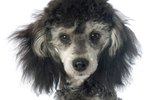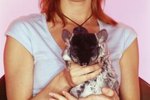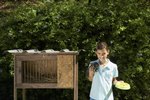Imagine a lion's mane on a rabbit's body. That pretty much describes the relatively recent lionhead rabbit, whose mane results from a genetic mutation. As of March 2013 the lionhead is not recognized by the American Rabbit Breeders Association as an official breed. Lionheads are a recognized breed in Great Britain. The North American Lionhead Club is working on gaining recognition in the United States.
North American Lionhead Club
According to the North American Lionhead Club's website, the NALC has been seeking ARBA recognition for its breed since 2003. Currently lionheads may be shown at ARBA-sanctioned events as a exhibition breed only, ineligible for best-in-show awards. Founded in 2001, the NALC hosts an annual lionhead show in Columbus, Ohio, each May. The elected officers of the NALC include president, vice president, secretary and treasurer, along with nine directors. Eligible candidates must be members of both the NALC and the ARBA for at least two consecutive years before running for office.
Breed Standard
Lionheads have big manes but small bodies. At maturity, the lionhead ranges between 2.5 and 3.5 pounds. Lionhead colors are black, chocolate, tortoise, blue, blue point, blue-eyed white and ruby-eyed white, chestnut agouti, seal, silver marten, smoke pearl, pointed white, sable point and Siamese sable. The lionhead's body should be short and compact, with broad chest and shoulders. The hindquarters are also broad and deep, while legs are medium-boned and of medium length. The head must be wide with slightly round eyes, with the head attached to the body so no neck is visible. Ears cannot exceed 3.5 inches in length and should be furry with round tips.
Manes
The "mane" is a dominant genetic mutation, so breeding a lionhead to another type of rabbit will result in some maned offspring. A lionhead might possess a double mane, which consists of a mane encircling the head, and wooly fur around the tail, hips and hindquarters. Single-maned lionheads have only the mane around the head and possibly the chest. Some lionhead offspring don't have a mane, so they resemble any small rabbit. Non-maned lionheads shouldn't be used for breeding purposes.
Considerations
Lionheads tend to timidity, so aren't a particularly good breed for children. Once a lionhead trusts its person, this small bunny becomes a playful, friendly pet. Their manes require regular combing for mat avoidance. The teeth of all rabbits grow constantly, so bunnies require fiber in the form of hay to keep the teeth worn down. Lionheads are more prone than other breeds to dental disease, so check your pet's teeth regularly for any signs of uneven growth. Because of their long fur, lionheads are more likely to develop hairballs than other rabbits. Your vet can recommend a hairball preventive for your lionhead.
References
- North American Lionhead Rabbit Club: Introduction to the Lionhead Breed
- North American Lionhead Rabbit Club: The Lionhead Standard
- North American Lionhead Rabbit Club: Speaking Lionhead
- Rabbit Matters: The Lionhead Rabbit
- North American Lionhead Rabbit Club: History—How It All Started
- North American Lionhead Rabbit Club: Election Information
Writer Bio
Jane Meggitt has been a writer for more than 20 years. In addition to reporting for a major newspaper chain, she has been published in "Horse News," "Suburban Classic," "Hoof Beats," "Equine Journal" and other publications. She has a Bachelor of Arts in English from New York University and an Associate of Arts from the American Academy of Dramatics Arts, New York City.





